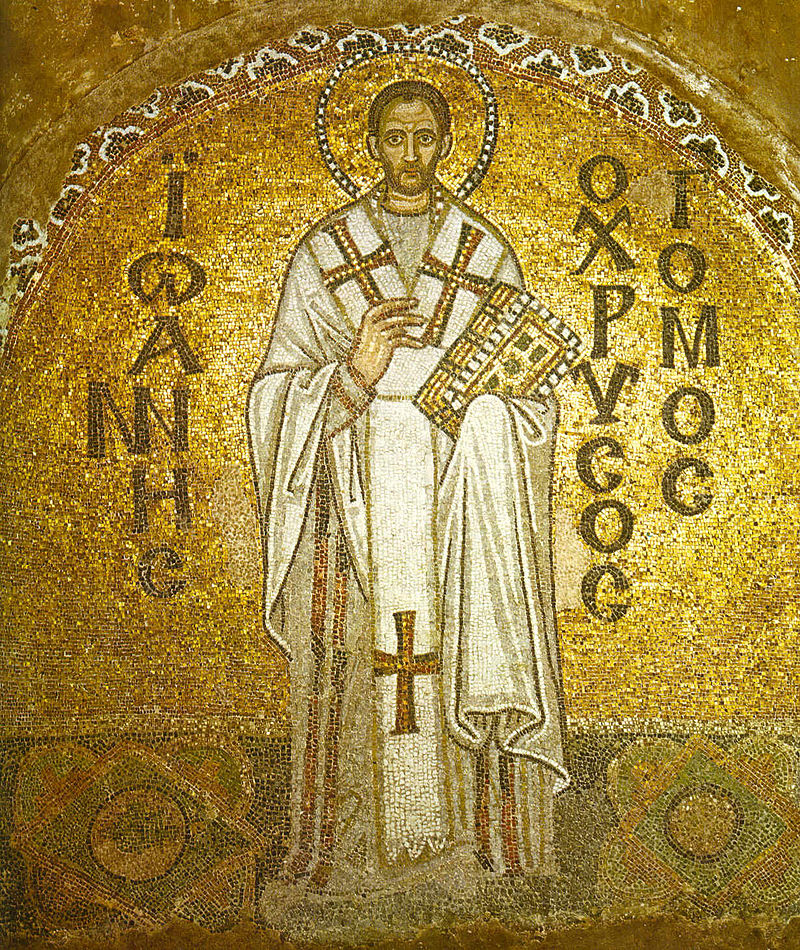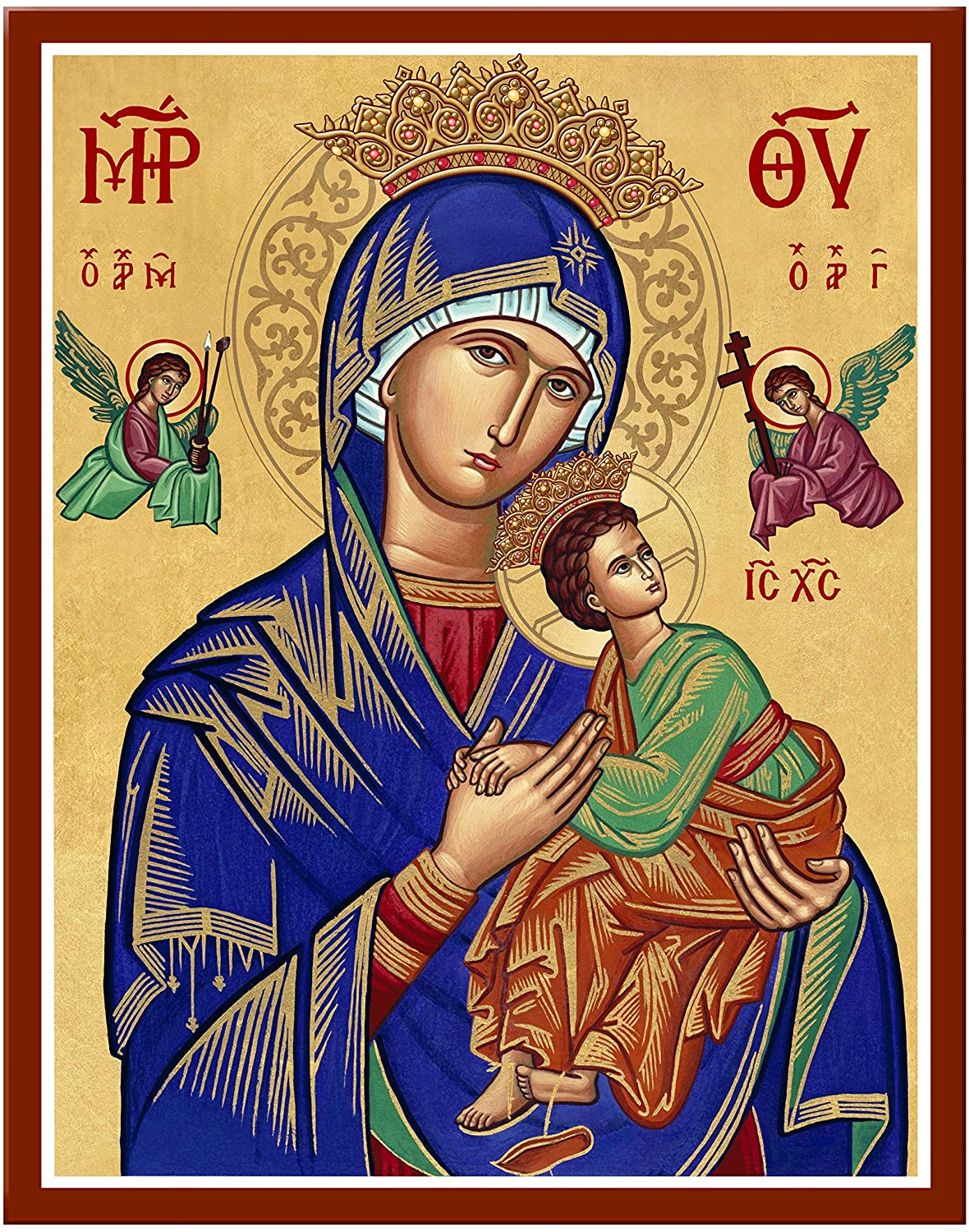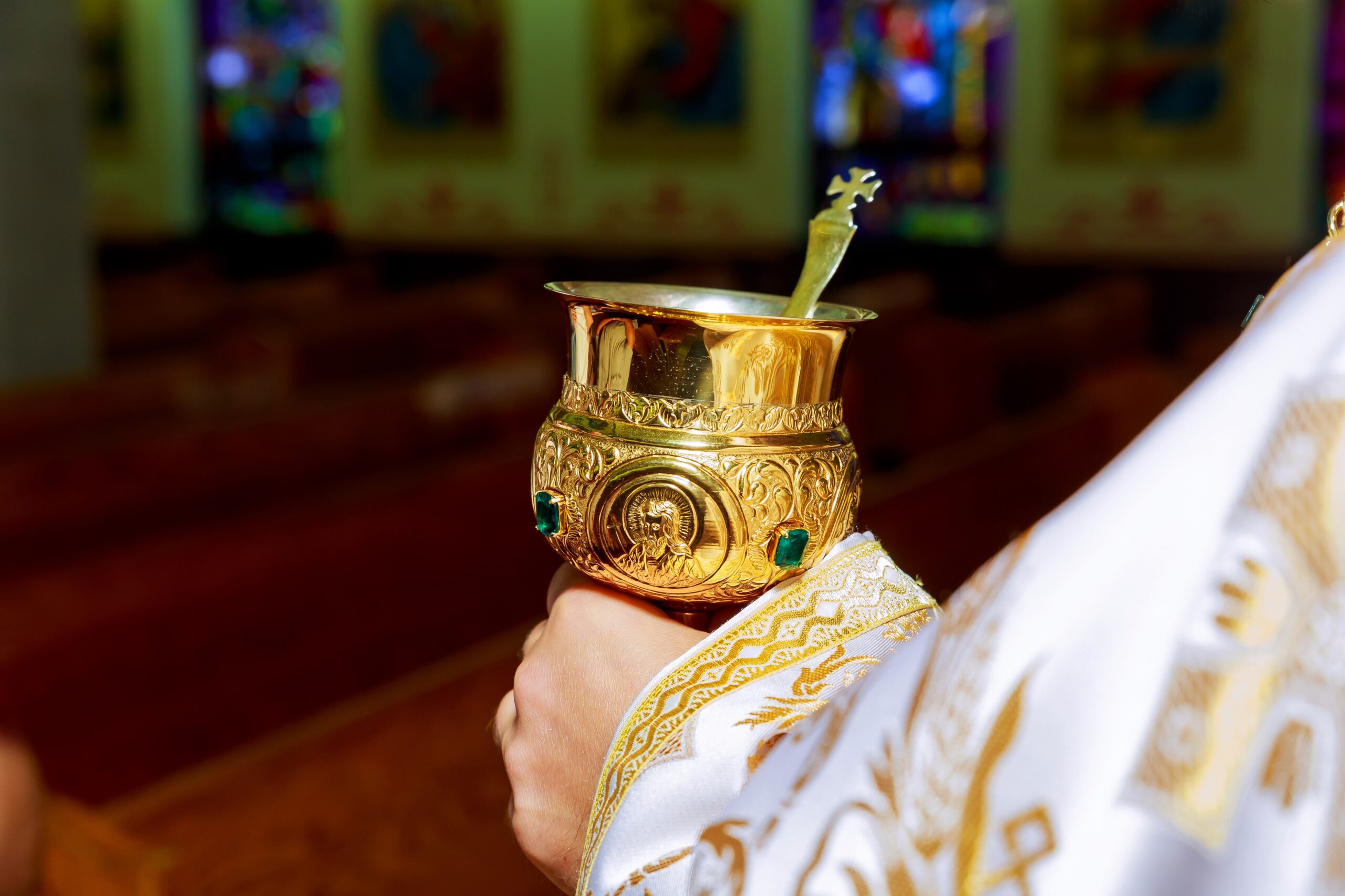The Byzantine Liturgy

Divine Liturgy of
St John Chrysostom
The Liturgy of Saint John Chrysostom is the most celebrated divine liturgy in the Byzantine Rite. It is named after its core part, the anaphora attributed to Saint John Chrysostom, Archbishop of Constantinople in the 5th century.
It reflects the work of the Cappadocian Fathers to both combat heresy and define Trinitarian theology for the Christian Church. This liturgy was probably used originally by the School of Antioch (John having been a deacon and priest in Antioch) and, therefore, most likely developed from West Syriac liturgical rites. In Constantinople, it was refined and beautified under John’s guidance as Archbishop (398–404). As a divine liturgy of the Church of Holy Wisdom, Hagia Sophia, it became over time the usual divine liturgy in the churches within the Byzantine Empire. Just two divine liturgies (aside from the presanctified), those of Saints John and Basil the Great, became the norm in the Byzantine Church by the end of the reign of Justinian I.[1] After the Quinisext Council and the liturgical reforms of Patriarch Theodore Balsamon, the Byzantine Rite became the only rite in the Eastern Orthodox Church, remaining so until the 19th and 20th Century re-introduction by certain jurisdictions of Western Rites.
The liturgy of Chrysostom was translated into Latin by Leo Tuscus in the 1170s.

Preserving and Promoting our Traditions
WHEN YOU ENTER CHURCH, it is customary to first go to the Tetrapod Table up front, in the middle of church — we are to make the sign of the cross, bow, and kiss the icon and cross displayed there (we are excused of kissing the cross and/or icons at this time due to the pandemic). We then bow and make the sign of the cross again, and then go to light candles or take our place for Liturgy. In our Byzantine Catholic Churches, we make the Sign of the Cross (holding together the right thumb, index and middle fingers) starting with our forehead, then to our mid-chest, then to our right shoulder first, then the left shoulder. Also in our churches, we do not genuflect (brief bending of the right knee towards the altar) – instead we make the sign of the cross the Eastern way, and bow towards the altar. And remember that church is a holy place, so try to keep quiet (not to talk or laugh loudly) before, during, or after the church services. Let’s pre- serve and promote our own and beautiful traditions. Leave quietly. We encourage you to visit with others, but once you are outside of the church you won’t disturb others who want to stay and pray. So, please leave quietly and then visit afterward.
Cell phones should never be used in Divine Liturgy for calls or texting. The exceptions are emergencies (big ones, not everyday ones) and if you do use one, please walk out of church to do so. Also, if you are using the phone for readings or prayers, this is appropriate, but try to be discreet. Proper Church Attire – Church is a sacred place with its traditions. When we come to worship we should respect those traditions. Our clothes should be modest and tasteful. Inappropriate attire such as shorts, sneakers, tight pants, mid-thigh dresses and skirts, low cut blouses can be perceived as disrespectful and could be offensive to other worshipers. Thank you for your consideration.
Guide to Receiving Holy Communion in the
Ukrainian Greek-Catholic Church
Do you ever come up to receive Holy Communion during the Divine Liturgy and wonder if you are doing it right?
This quick guide will hopefully give you the tips and tricks you need to know to answer this question.
It will help you and the priest who is distributing Holy Communion each week.
– It is important to approach the chalice with care and reverence.
– Don’t make the Sign of the Cross or move abruptly anywhere near the priest – this could accidently knock the chalice. Instead, make
the Cross long before you receive, and move gently and carefully.
– Don’t close your eyes. If you can’t see, there is a tendency to try to move toward the chalice, which risks knocking it.
– Speak your name aloud so the priest can hear it; this way, the priest can prayerfully commune you by name
(even if the priest knows you, he may forget in the midst of the Liturgy!)
– Open your mouth – WIDE! This may sound obvious, but in the process of receiving the Holy Mysteries it is often forgotten, making it difficult for the Holy Mysteries to be safely delivered to the mouth of the communicant. And leave your tongue in place.
Do not stick it out, and do not curl it up.
– Center yourself in front of the chalice. There is no need to move to the side of the chalice.
– Know your height! Most times the clergy are up a step and thus are already higher than people.
If you are at eye-level with the chalice already, there is no need to bend your knees and move lower.
If you are tall enough to see flat over the head of the one giving you Holy Communion, then bend a bit, but it is not necessary.
– You as the communicant does not say the ‘Amen’ at the end.
The ‘Amen’ is part of the prayer that the one distributing the Holy Communion says.
– In the Ukrainian-Greco Catholic Church, we observe the practice of receiving Holy Communion from the point of our baptism.
This is of course up to the parents. If it is your practice, please mention to the priest whether or not your child of any age receives or
not. If your child is an infant, please specify if they are to receive just the Precious Blood or both the Precious Body and Blood.
All children start eating solids at different times.
Basic Guidelines
for Reception of
Holy Communion:
1) You are a member of the Catholic Church (Orthodox faithful are welcome to receive Holy Communion).
2) You have participated in the Sacrament of Confession at least during the Easter or Christmas seasons this
past year if not more frequently.
3) You attend Divine Services regularly.
4) Your lifestyle is consistent with the teaching of the Catholic Church.
5) You have kept the Liturgical fast – no food at least one hour prior to the Divine Liturgy (water and medicine
does not break the fast).
6) You have been in church from the beginning of the service, or at least heard the Gospel.
7) To the best of your ability, you are in the state of Grace.
If for any of these or other reasons you cannot receive Holy Communion,
You are very welcome to come for a blessing.
Please indicate to the priest that you would like to receive his blessing
